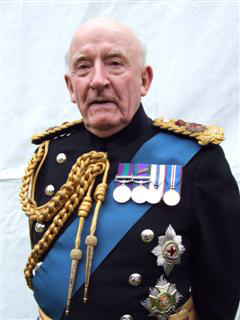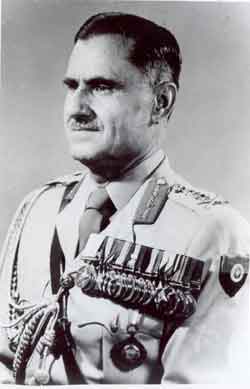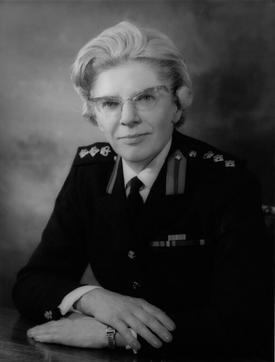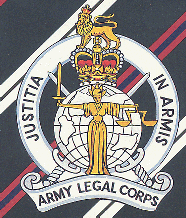
General Sir Michael David Jackson, is a retired British Army officer and one of its most high-profile generals since the Second World War. Originally commissioned into the Intelligence Corps in 1963, he transferred to the Parachute Regiment in 1970, with which he served two of his three tours of duty in Northern Ireland. On his first, he was present as an adjutant at the events of the Ballymurphy massacre (1971), where eleven unarmed civilians were shot dead by British troops, and then at Bloody Sunday in 1972, when British soldiers opened fire on unarmed protesters, killing fourteen. On his second, he was a company commander in the aftermath of the Warrenpoint ambush (1979), the British Army's heaviest single loss of life during the Troubles. He was assigned to a staff post at the Ministry of Defence (MoD) in 1982 before assuming command of the 1st Battalion, Parachute Regiment, in 1984. Jackson was posted to Northern Ireland for the third time, as a brigade commander, in the early 1990s.

Field Marshal Peter Anthony Inge, Baron Inge, was a senior British Army officer. He was the Chief of the General Staff, the professional head of the British Army, from 1992 to 1994 and then served as Chief of the Defence Staff before retiring in 1997. Early in his military career he saw action during the Malayan Emergency and Operation Banner in Northern Ireland, and later in his career he provided advice to the British Government during the Bosnian War.
In the United Kingdom, the Judge Advocate General is a judge responsible for the Court Martial process within the Royal Navy, British Army and Royal Air Force. As such the post has existed since 2006; prior to this date the Judge Advocate General's authority related to the Army and the RAF while the Judge Advocate of the Fleet was the equivalent with regard to the Royal Navy.

An adjutant general is a military chief administrative officer.
The Women's Royal Army Corps was the corps to which all women in the British Army belonged from 1949 to 1992 except medical, dental and veterinary officers and chaplains, who belonged to the same corps as the men; the Ulster Defence Regiment, which recruited women from 1973, and nurses, who belonged to Queen Alexandra's Royal Army Nursing Corps.

The Adjutant General's Corps is a corps in the British Army responsible for many of its general administrative services, named for the Adjutant-General to the Forces. As of 2002, the AGC had a staff of 7,000 people.

General Tapishwar "Tappy" Narain Raina, best known as T.N. Raina, was a senior army officer and a diplomat who served as the 9th Chief of the Army Staff of the Indian Army between 1975 and 1978.

Sir Timothy John Granville-Chapman, is a former British Army officer, who served as Vice-Chief of the Defence Staff of the British Armed Forces (2005–2009).

Jayanto Nath Chaudhuri, was an Indian general who served as the 5th Chief of Army Staff of the Indian Army from 1962 to 1966 and the Military Governor of Hyderabad State from 1948 to 1949. After his retirement from the Indian Army, he served as the Indian High Commissioner to Canada from 19 July 1966 until August 1969.
The Royal Air Force Legal Branch (RAFLB) or Directorate Legal Services (DLS) – as it is better known – is the uniformed legal service provider for the Royal Air Force. It consists of solicitors and barristers qualified in a Commonwealth jurisdiction. DLS is headquartered at Air Command RAF High Wycombe. The Directorate is currently staffed by a mixture of members of:

General Sir William Godfrey Fothergill Jackson, was a British Army officer, military historian, author and Governor of Gibraltar.
Lieutenant-General Sir Robert Francis Richardson was a British Army officer. Among other posts, he commanded a battalion and a brigade during the Troubles before becoming General Officer Commanding in Northern Ireland from 1982 to 1985.

General Pran Nath Thapar was the fourth Chief of Army Staff of the Indian Army. The Sino-Indian War was fought during his term, in which the Indian Army fared poorly. Thapar resigned during the last stages of the war, handing charge to Lt. Gen. J. N. Chaudhuri.
Lieutenant General Sir Frederick Richard Viggers, is a former senior British Army officer who served as Adjutant-General to the Forces immediately prior to his retirement in 2008. He was Gentleman Usher of the Black Rod from 30 April 2009 to 28 October 2010. He also served in Bosnia in the aftermath of the breakup of Yugoslavia, and in the Iraq War.
The Adjutant-General of the Indian Army is the senior administration officer who reports to the Chief of Army Staff and is also the Colonel of the Corps of Military Police and Judge Advocate General.
Lieutenant General Inderjit Singh Gill, PVSM, MC was a general officer in the Indian Army. He was the officiating Director of Military Operations (DMO) of the Indian Army during the Bangladesh Liberation War. He retired in 1979 after serving as the Western Army Commander.

Major General Susan Kerstin Ridge, is a retired senior British Army officer and lawyer. From September 2015 to July 2019, she was Director General of the Army Legal Services Branch (DGALS). She was the first woman to hold the rank of major general in the British Army and the first to hold non-honorary general officer rank since the Second World War.
Judge-advocates are military lawyers serving in different capacities in the military justice systems of different jurisdictions.
Major-General Gordon Risius, CB is a former senior British Army officer and lawyer who served as Director of the Army Legal Services Branch.

Sheila Anne Elizabeth Heaney, CB, MBE, TD was a British Army officer. She joined the Auxiliary Territorial Service shortly before the Second World War and served in the UK, East Africa and Palestine. In 1949 she transferred to the newly formed Women's Royal Army Corps (WRAC). Heaney rose through the ranks and was appointed a Member of the Order of the British Empire. She was promoted to the rank of brigadier, appointed director of the WRAC and aide-de-camp to Queen Elizabeth II in 1970. As part of her role as director Heaney visited the United States to study the integration of women into their army and recommended that the process proceed in the UK on a more gradual basis. She instituted changes to make it easier for women in the British Army to choose their branch of service. After her retirement in 1973, she lived in Edinburgh where she volunteered with the Women's Royal Voluntary Service and supported a local hospice.












